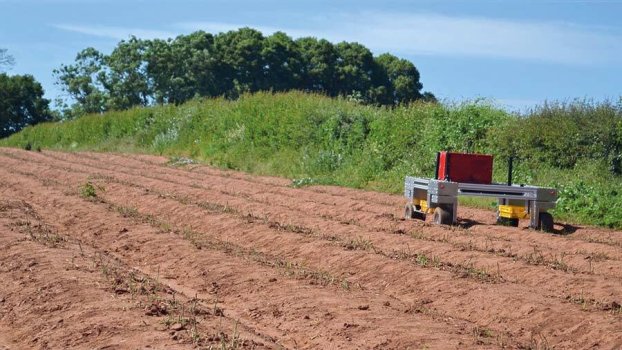K
Kathleen Martin
Guest
Agritech innovation continues to offer advances in farmer decision making, while also potentially helping solving challenges around labour, climate change and input effectiveness.
Farmers Weekly looks at five technologies that could improve farming effectiveness, which were showcased at the AgriTechE Reap conference.
1. Disease prediction, weed mapping and yield prediction
A new system developed by crop modelling company Omega Crop uses data from multiple sources to help map weeds, predict disease incidence, yield loss and final yields, and give farmers actionable insight, says co-founder and chief executive officer Jared Bainbridge.
“We’re completely data source agnostic. We will take satellite, drone, mobile phone, in-ground sensor – any kind of data that is gathered in the field – and make good use of it.”
Satellite data is used as a base layer, and if a farmer or agronomist has a drone, the firm can supply an autopilot solution with the Omega Crop software to fly the field to collect relevant data.
“We use that data to give you actionable intelligence about your field. We tell you what the information means. We can predict yields, but also focus on predicting diseases before they occur and mapping weeds at any point in the crop growing cycle.”
The disease-prediction model uses weather and other data to forecast disease pressure in the coming days and even weeks, with a level of risk.
“If we can tell you there won’t be another disease event for another 18 days and good weather for at least another 15, you can pick your moment to do another application, which prolongs the period of protection, and potentially lowers costs by extending protection and reducing the number of sprays required,” he says.
So far, there are models for septoria and fusarium ear blight in wheat, while for weeds the focus in the UK has been on blackgrass.
Weeds can be mapped using drones early in the season, as they emerge, as well as later in the season, ready to help in-between crop control. The data can also be used to predict the yield loss from weeds or diseases with and without treatment.
Final yield predictions can be made as early as March, with increasing accuracy as it gets closer to harvest.
Continue reading https://www.fwi.co.uk/arable/crop-management/disease-management/5-high-tech-advances-that-could-change-arable-farming
Farmers Weekly looks at five technologies that could improve farming effectiveness, which were showcased at the AgriTechE Reap conference.
1. Disease prediction, weed mapping and yield prediction
A new system developed by crop modelling company Omega Crop uses data from multiple sources to help map weeds, predict disease incidence, yield loss and final yields, and give farmers actionable insight, says co-founder and chief executive officer Jared Bainbridge.
“We’re completely data source agnostic. We will take satellite, drone, mobile phone, in-ground sensor – any kind of data that is gathered in the field – and make good use of it.”
Satellite data is used as a base layer, and if a farmer or agronomist has a drone, the firm can supply an autopilot solution with the Omega Crop software to fly the field to collect relevant data.
“We use that data to give you actionable intelligence about your field. We tell you what the information means. We can predict yields, but also focus on predicting diseases before they occur and mapping weeds at any point in the crop growing cycle.”
The disease-prediction model uses weather and other data to forecast disease pressure in the coming days and even weeks, with a level of risk.
“If we can tell you there won’t be another disease event for another 18 days and good weather for at least another 15, you can pick your moment to do another application, which prolongs the period of protection, and potentially lowers costs by extending protection and reducing the number of sprays required,” he says.
So far, there are models for septoria and fusarium ear blight in wheat, while for weeds the focus in the UK has been on blackgrass.
Weeds can be mapped using drones early in the season, as they emerge, as well as later in the season, ready to help in-between crop control. The data can also be used to predict the yield loss from weeds or diseases with and without treatment.
Final yield predictions can be made as early as March, with increasing accuracy as it gets closer to harvest.
Continue reading https://www.fwi.co.uk/arable/crop-management/disease-management/5-high-tech-advances-that-could-change-arable-farming

